
To grow successful tomato plants, watering correctly is essential. Unfortunately, it is also one of the practices many gardeners get wrong.
Best case scenario, underwater and you deprive the plant, causing weak growth. Overwater and the roots rot, again causing weak growth.
Worst case scenario, you go too far in either direction and ultimately kill the plant. It’s a delicate balance.
Warnings aside, watering your tomato plants correctly is not difficult to do. It may take some practice at first, but once you understand the basics of how to water, how often to water, and how much to water, you won’t have to deal with the panic of correct watering any longer.
Why Correct Watering is Important
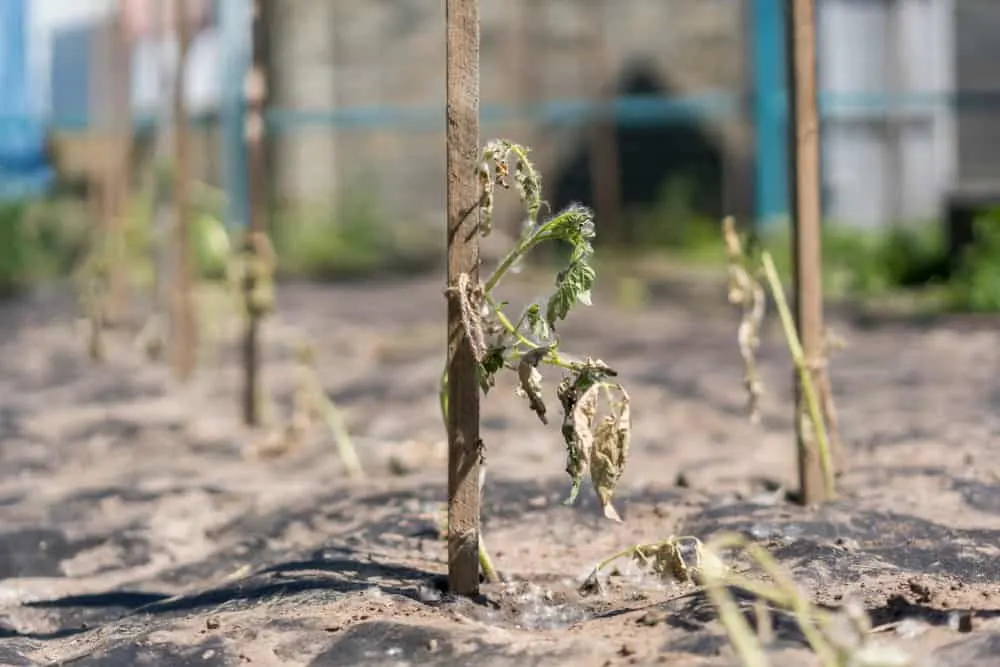
Watering is obviously an essential part of tomato plant care. Without water, the plants simply won’t survive. But watering the right amount, at the right time, and in the right way is more than a standard care task.
It can prevent a host of problems common in plants with a lack of (or more often, too much) water, that every gardener would be happy to avoid:
- Stunted growth
- Root rot
- Poor quality fruit
- Low yield
- Vulnerability to pests and diseases
- Blossom end rot
- Cracking
- Yellowing and dropping leaves
Most importantly, correct watering is good for the fruit. Tomatoes are mostly made up of water and the plant needs plenty of it to produce fruits. To ensure a great harvest – the goal of every tomato gardener – you need to start by getting watering right.
How To Water Tomato Plants
‘How to water’ may seem like a trivial question, but it can have a big impact on the health of your plants. Providing your plants with water is essential, but the methods you use to water are just as important.
Water slowly
The key to watering is consistency. Your tomato plants need a consistent supply of water to support their continuous growth. That consistent supply won’t be provided if you quickly flood the soil every few days and leave the plant to its own devices.
When you water in large amounts too quickly, the water tends to run off rather than penetrating the soil and reaching the roots where it is needed. By watering slowly, you fully saturate all parts of the soil – not just the topsoil. In this way, you’ll give the plants access to more water over time than if you were to flood the soil, even if you use the same amount of water.
If you don’t feel like standing around watering your plants slowly for hours – good news. You don’t have to. Installing a drip irrigation system will solve the problem for you and take much of the hassle out of watering. It’s easy to purchase one and install it around your tomato plants, or you can simply make your own with items available around your house.
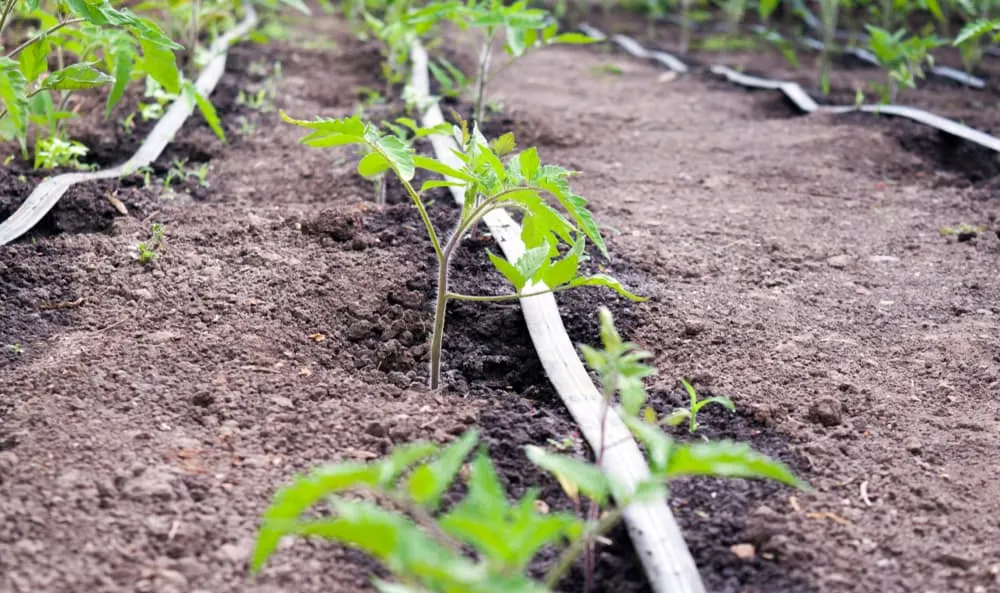
Water deeply
Even though you can’t see it, what happens to your tomato plant below the soil is just as important, if not more important, than what’s going on above the soil. A strong root system is key to a healthy, productive plant. And one of the ways you can encourage your plant to develop a strong root system is by watering deeply.
When you water the soil slowly and thoroughly, the roots of the plant travel further down into the soil to soak up the extra water. This gives the plant access to more nutrients and establishes a deep root system that will help the plant survive during dry spells.
As a general guide, soak the soil to a depth of at least 6 inches. Again, a drip irrigation system can help with this task by providing a consistent supply of water that penetrates deep into the soil, rather than remaining on the top layer only.
Water at the base
This principle is one of the first lessons every new gardener learns, but it is so important that it bears repeating – water the soil, not the leaves.
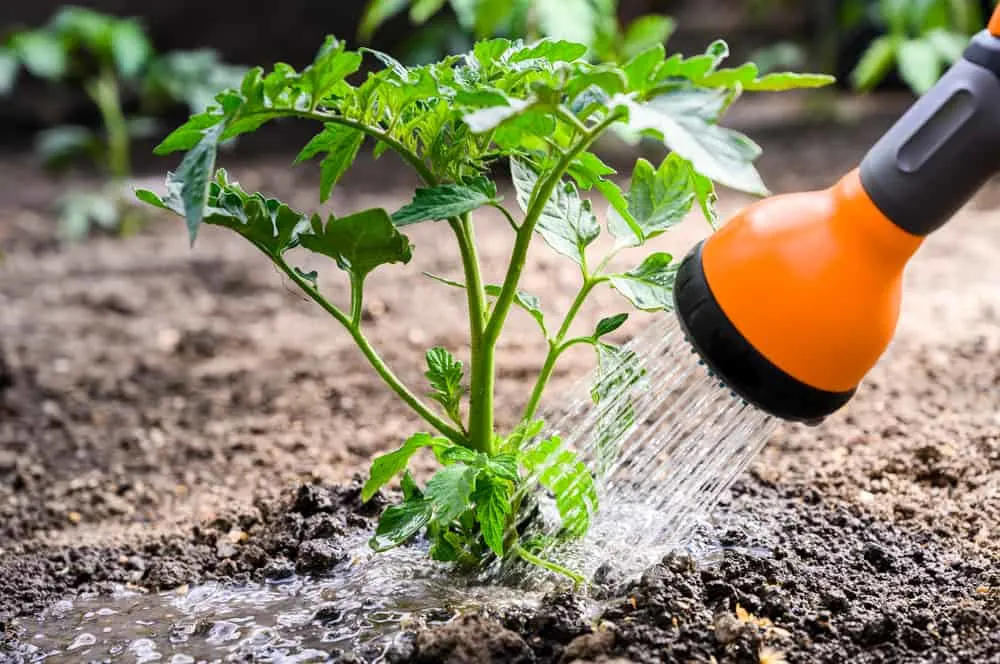
When you water over the top of the plant, much of the water remains on the leaves and evaporates, serving no purpose to your plants. The water that does reach the soil often does so unevenly, resulting in dry spots in the soil.
Leaving water on the leaves for extended periods can also cause problems with fungal diseases or attract pests that negatively impact the health of your plant.
The roots of the plant take the water to the parts of the plant that need it. Focus on them by watering the soil at the base of the plant and leaving the leaves out of the equation.
Don’t water too much directly around the stem as this can cause the soil to wash away or the stem to rot. Focus on the patch of soil around the plant and water slowly and deeply for the best results.
Mulch
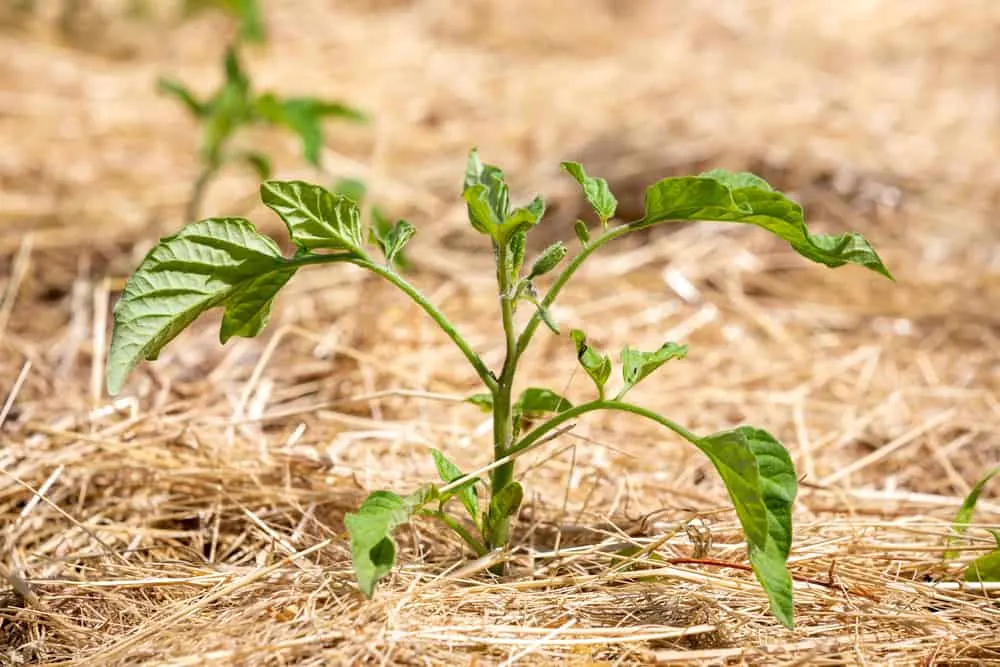
Once you’ve finished watering slowly and deeply around the base of the plant, you may think your job is complete. However, there is one more task left to make your watering far more successful – mulching.
Mulching has a long list of benefits, but the main benefit, in this case, is moisture retention.
A 2-inch layer of mulch around the base of your tomato plants keeps the soil cool and prevents water from evaporating, leaving more available to your plant. Because the water stays in the soil longer, it also lessens the time you need to spend watering your plants. It’s a win-win.
You don’t even need to spend any money. Use common items around your garden – like dried leaves or compost – as a layer of mulch, and mix them back into the soil once they start to break down as extra organic matter to feed your plants.
Before you get started, check out this list of 5 Best Mulches For Tomato Plants to find out which materials to use and the best way to apply them.
How Often To Water Tomato Plants
This is probably the most common question when it comes to watering. Unfortunately, there is no simple answer. Tomato plants don’t live on an easy-to-follow schedule, and simplified advice such as ‘water every 3 days’ does not tell the whole story. How often you need to water will depend on a number of factors:
Age/Size
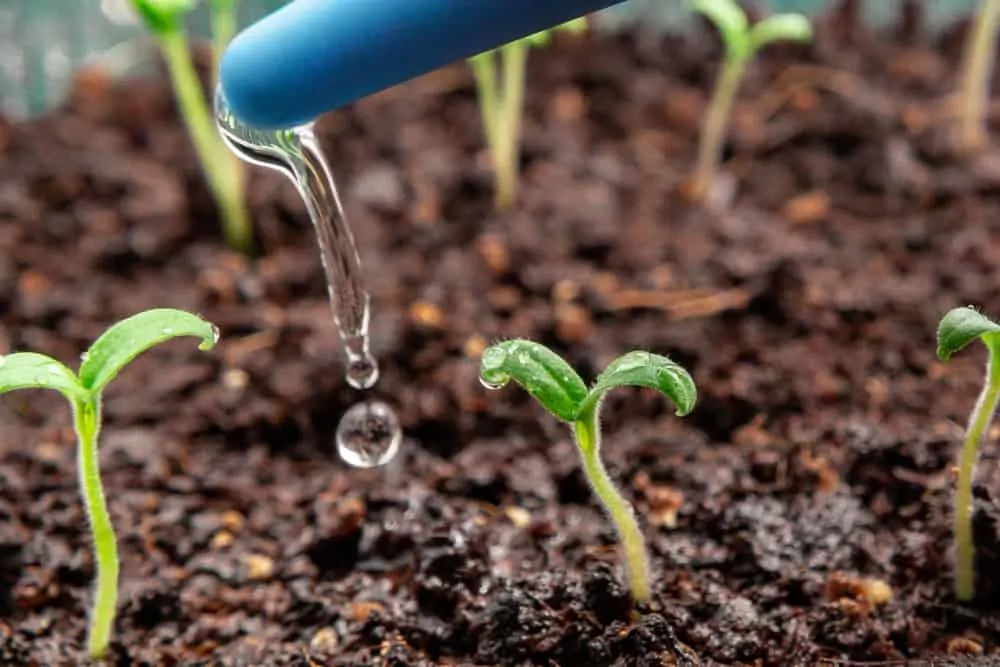
In the early stages of growth, young seedlings need plenty of water to establish deep roots. As the plant grows and the roots travel further into the soil, they can handle less watering if the soil is saturated deeply.
Larger plants with extensive root systems will also need water more often than smaller plants as the water is taken up and depleted faster.
At Planting Time
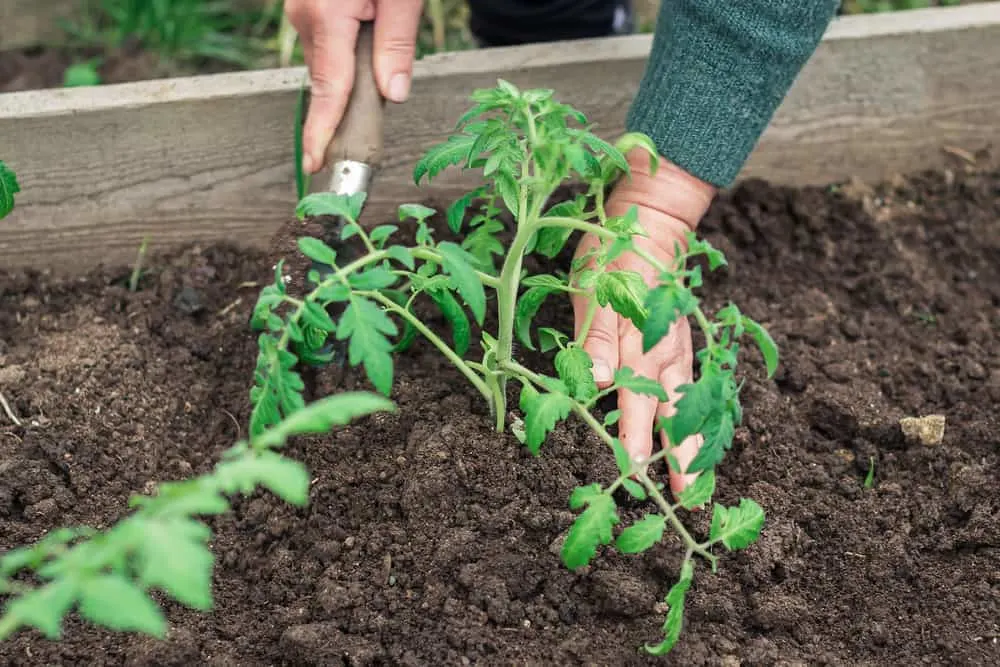
When you transplant your young tomato plants from their pot to the outside ground, it’s imperative that you give them a good soaking.
Temperature
In hot weather, the water in the soil will evaporate faster, leaving less available to your plants. During hot summer periods, you may need to check the soil once or even twice per day to ensure your tomato plants have enough water.
Stage of Fruit
Tomato fruits need plenty of water as they are developing. However, once the fruit is fully formed, too much water can cause the skin of the fruits to split. Limiting watering after the fruits develop may also make the tomatoes tastier.
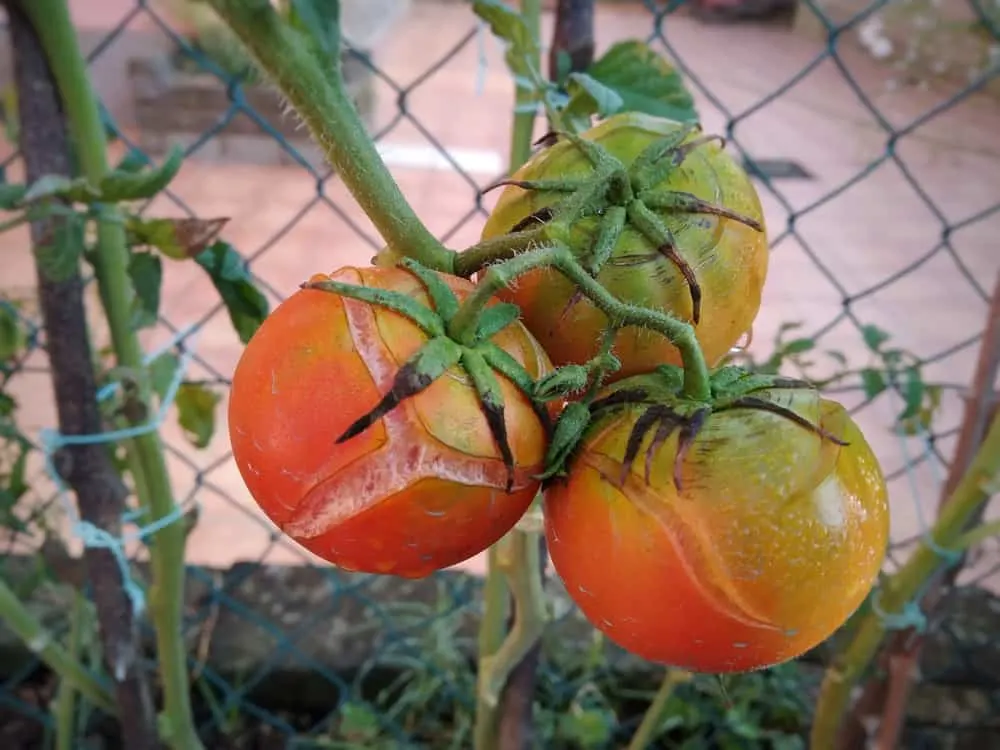
Rainfall
After periods of heavy rainfall, your plants will not need to be watered for a while as they have access to water deep in the soil. Rain for extended periods can also cause the soil to become soggy, resulting in root rot. To ensure your plants have consistent access to a sufficient supply of water – no more and no less – you’ll need to work around the rain.
Containers
If your tomatoes are planted in containers, they will need to be watered more often as the soil dries out quicker.
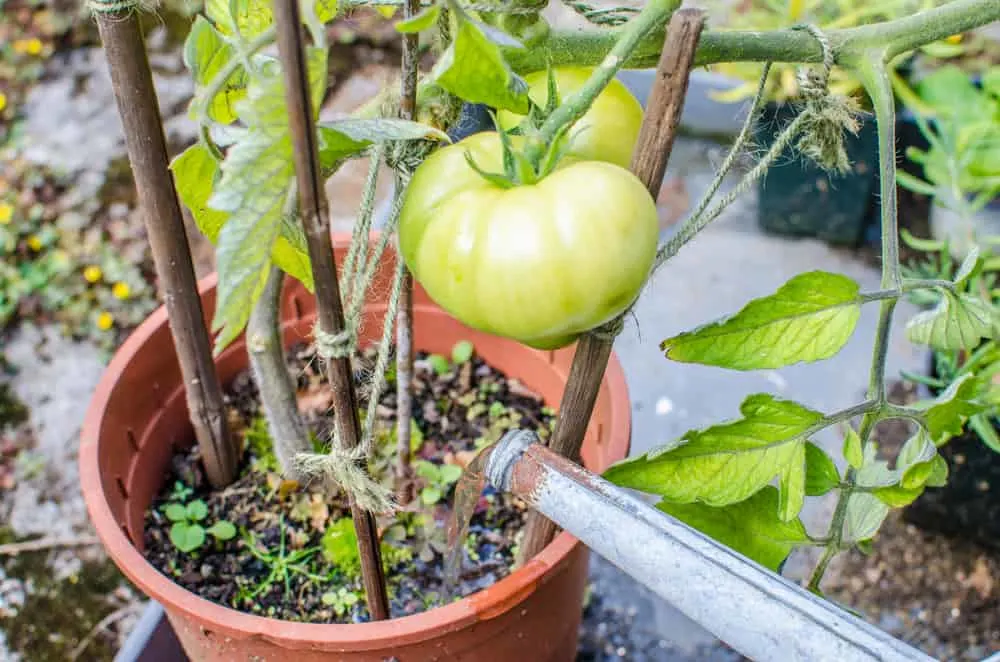
Those are just a few of the things that impact how often you need to water. Instead of following a schedule that doesn’t account for what your plant needs at the right time, check the soil every day or two and assess the moisture level.
Only water once the top layer of soil – about an inch or two down – has dried out. This will prevent any danger of over or underwatering that comes with set schedules by only providing the plants with water when they really need it.
Make sure to water in the mornings. When you water in the middle of the day, typically the hottest part of the day, it will evaporate before the roots get a chance to access the water. When you water in the evening, any water that splashes onto the leaves and stem has no time to dry out, leading to fungal diseases.
How Much To Water Tomato Plants
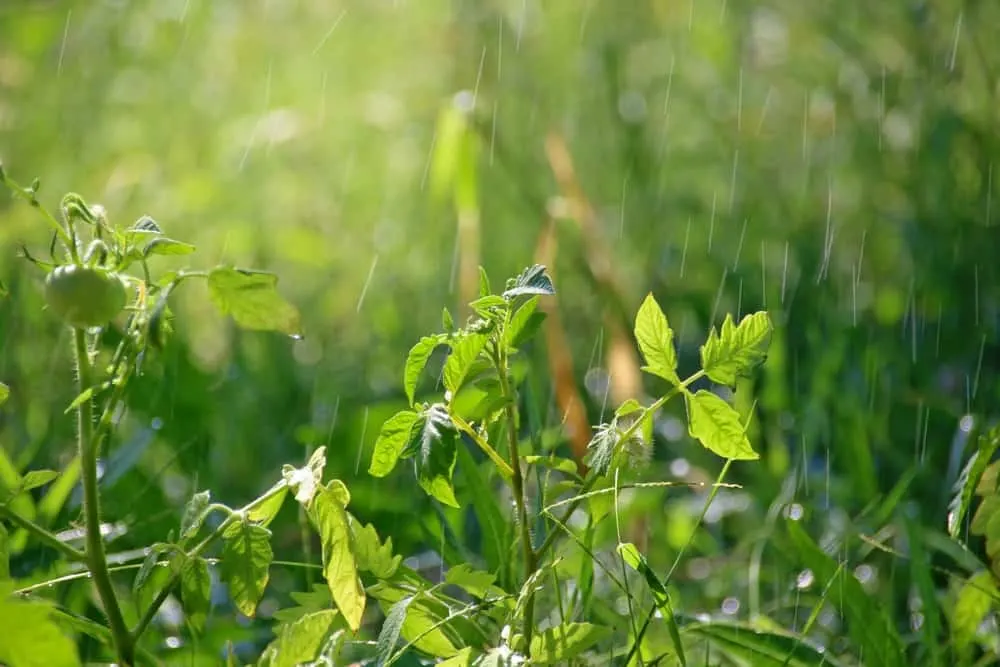
How much water to give your tomato plants is difficult to specify. Experts say tomato plants need around 1.5 inches of water per square foot of soil per week. But translating that into the right amount of water when the plant needs it is a difficult task. The amount can also vary by the factors mentioned before.
In other words, it’s best to assess the soil before watering and adjust as you go along rather than sticking to a set amount. As long as you water slowly and deeply, and don’t oversaturate the soil, how much water you supply will depend on the look of the soil and the plant rather than set numbers.
Watering may take some trial and error at first, but you will develop an intuition in the process that will help you better understand your tomato plant’s needs in the future.
